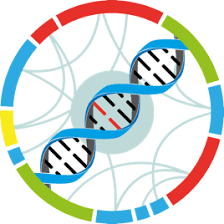Study : An embryo lethal transgenic line manifests global expression changes and elevated protein/oil ratios in heterozygous soybean plants
Identification
Name
An embryo lethal transgenic line manifests global expression changes and elevated protein/oil ratios in heterozygous soybean plants
Identifier
dXJuOkVWQS9zdHVkeS9QUkpOQTU0MDQzNw==
Description
Understanding the molecular processes of seed development is important especially in agronomic crops that produce large amounts of nutrient reserves. Because soybean is a vital source of vegetable protein worldwide, producers are concerned about increasing the total amount of protein in the seed without substantially lowering the amount of oil, another economically important product. Here we describe a transgenic soybean line with increased protein and protein/oil ratio, containing an average of 42.2% protein vs. 38.5% in controls and with a protein/oil ratio of 2.02 vs. 1.76 in controls over several generations of greenhouse growth. Other phenotypic data show that the seeds are heavier, although there are overall lower yields per plant. We postulate these effects result from insertion site mutagenesis by the transgenic construct. As this line never achieves homozygosity and appears to be embryo lethal when homozygous, one functional copy of the gene is most likely essential for normal seed development. Global transcript analyses using RNA-Seq for 88,000 gene models over two stages of cotyledon development revealed that more genes are over-expressed in the transgenic line including ribosomal protein related genes and those in the membrane protein and transporters families. Localization of the insertion site should reveal the genes and developmental program that has been perturbed by the transgenic construct, resulting in this economically interesting increase in protein and the protein/oil ratio. Overall design: 26 RNA-Seq samples from two stages of immature cotyledons, 10-25mg and 100-200mg, across 2 generations of plants. They include Jack control plants; mutants positively identified as having the transgenic construct (transformed transgenic); and mutant offspring that nonetheless did not contain the transgenic construct (transformed non-transgenic), indicating the lines did not become homozygous. There were 3 replicates per stage for the Jack controls; 3 replicates per stage for the transformed but non-transgenic plants; and 7 replicates per stage for the transformed transgenic plants.
Active
No
Data files
- SRR8991343
- SRR8991338
- SRR8991337
- SRR8991336
- SRR8991335
- SRR8991334
- SRR8991333
- SRR8991332
- SRR8991331
- SRR8991330
- SRR8991329
- SRR8991328
- SRR8991327
- SRR8991326
- SRR8991325
- SRR8991350
- SRR8991349
- SRR8991348
- SRR8991347
- SRR8991346
- ERZ1720641
- ERZ1720638
- ERZ1720633
- ERZ1720648
- ERZ1722340
- ERZ1720645
- ERZ1720634
- ERZ1720636
- ERZ1720887
- ERZ1722335
- ERZ1722342
- ERZ1722338
- ERZ1720642
- ERZ1722346
- ERZ1720637
- ERZ1720635
- ERZ1720639
- ERZ1720632
- ERZ1720640
Genotype
| Accession number | Name | Taxon |
|---|
